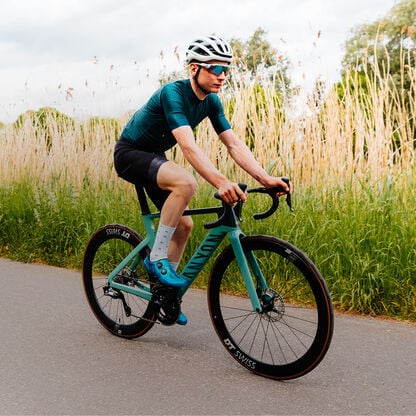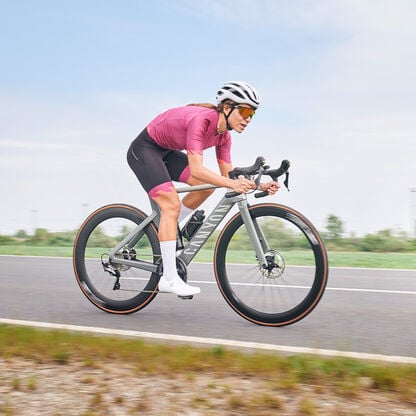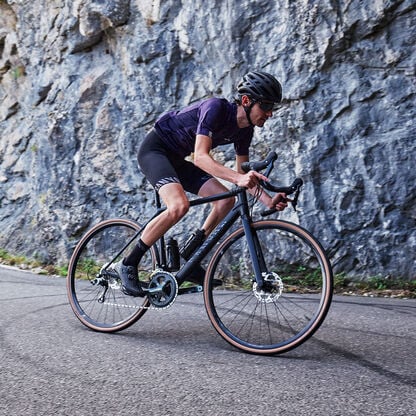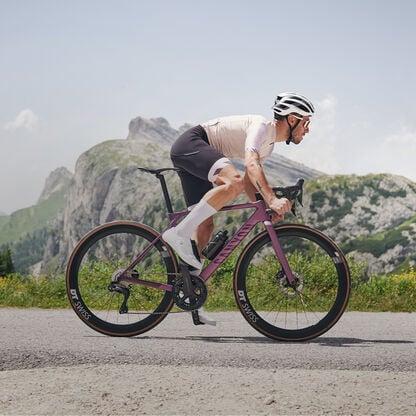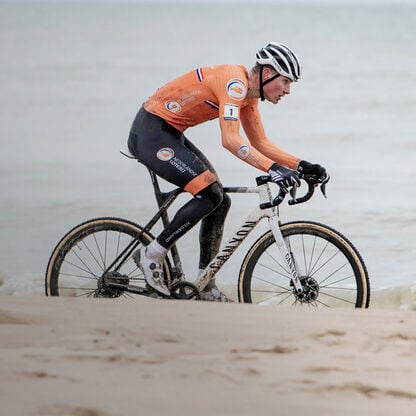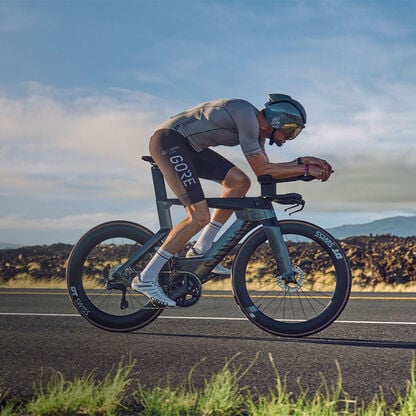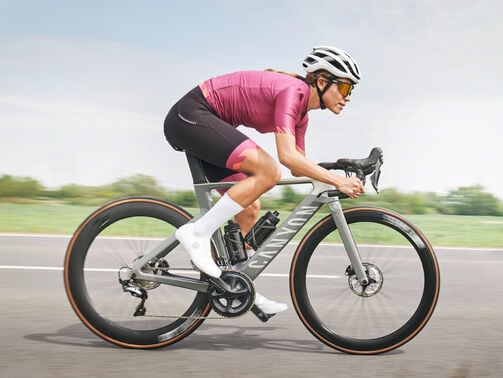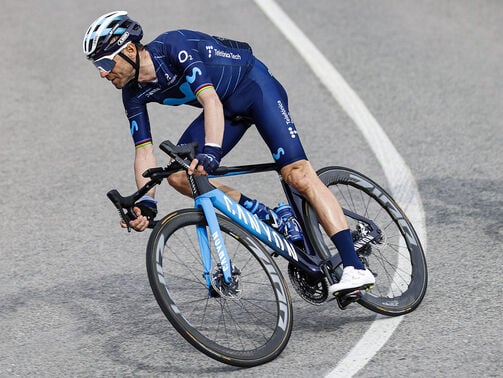Track cycling for beginners: Essential racing guide
Discover the world of track cycling with our essential beginner's guide. From velodrome basics to racing techniques, start your journey to racing success on the track.
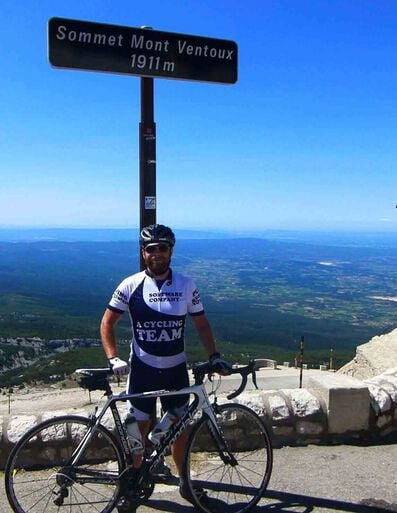
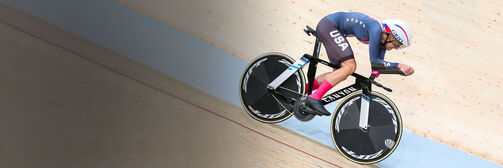
Contents
Understanding velodrome basics
So what’s a velodrome? It’s a banked oval track, typically between 330-500 meters long, where track cyclists compete. The corner banks, often called the cants, can be angled up to 45 degrees; fast-moving riders can essentially be perpendicular to the ground when riding them at speed. Velodromes can be indoors or outdoors; indoor tracks are often made of wood, while outdoor tracks are typically built with asphalt or concrete.
You might notice multiple colored lines on the track. Each signifies an important purpose:
- Côte d’Azur: This typically light blue line divides the racing area from the non-banked course apron. You often see competitors speeding up before entering the racing area or slowing down afterward before re-entering the infield.
- Black Line: Sometimes referred to as the datum line, this black band measures the official length of the track. All the actual racing occurs above this line.
- Red Line: The area between the red and black lines is called the sprinter’s lane; if two riders are competing for a spot, the lead rider must remain in the sprinter’s lane while the second rider tries to pass from above.
- Blue Line: Also known as the stayer’s line, the blue line furthest from the infield is used two very different ways. On training days, riders warming up or cooling down will stay above this blue line so as not to interfere with the riders lower on the track. During races, riders will sometimes ride high above the blue line, then use the steepness of banked corners to launch themselves downward at high speed. During two-person Madison competitions, a rider will stay above the line until they’re slung into the race by their partner.
Choosing the right track bike and gear
Most of the bike gear you need for track cycling – helmet, gloves, shoes, pedals, and so on – you likely already own. However, you do need a track-specific bike to compete. Newcomers can often borrow or rent track bikes as they’re getting acquainted with the sport, but at some point, they will have to obtain their own.
At first glance, track bikes look very similar to a standard road bike, albeit with a shorter top tube, shorter reach, and shallower fork rake, allowing for better handling at speed. (Read more about bicycle geometry and how it impacts your riding.) But there are key differences as well. Namely, no derailleurs and no brakes. (More on these later.)
When the time comes to purchase your own track bike, the Speedmax CFR Track is a supremely fast and versatile option. Canyon’s engineers used input from former and current world and Olympic track champions to create one of the fastest bikes to ever roll onto a velodrome. Aerodynamics experts sculpted the frame to minimize air drag; the front fork blades wrap around the front wheel – the first ever designed entirely by Canyon – to optimize airflow. (Learn more about Canyon’s aero bikes.)
Called the Pro Extension System, the CFR Track’s cockpit was designed to be adjustable to meet the needs and comfort of the individual competitors. The crank-based SRM power meter will tell you precisely how many watts you’re producing while on the track. The bike comes set up for individual track races like the 500- and 1000-meter time trial, but by swapping out the cockpit and switching wheelsets, it’s ready for group racing events like scratch or points races. Read about how the bike was created and how you can customize it further.
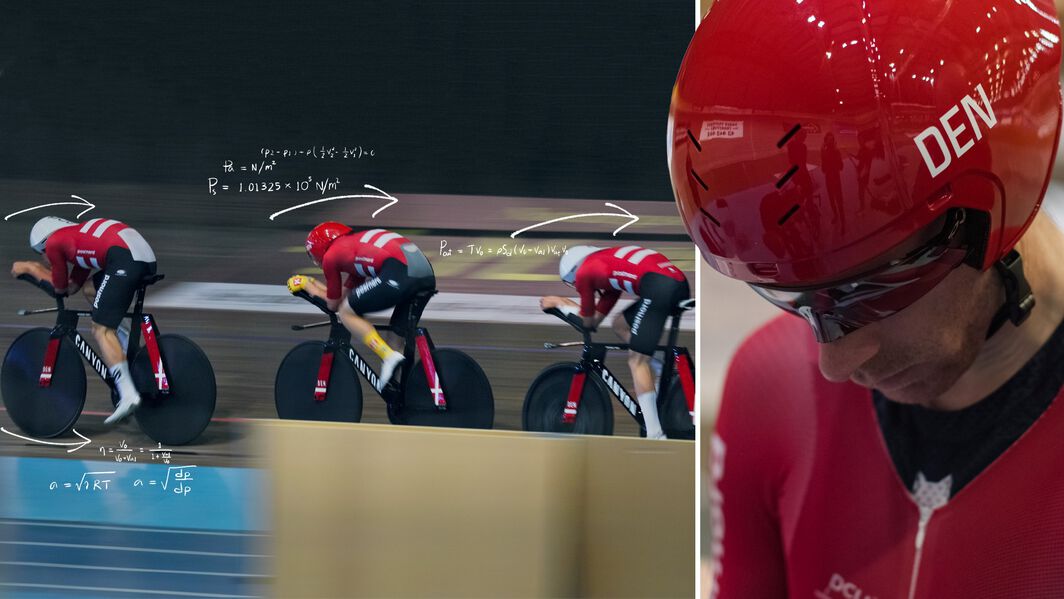
Essential techniques for novice track cyclists
Given the bikes’ lack of brakes and a derailleur, new track riders will likely need to rethink how they ride a bicycle.
Track bikes are fixed gear. You can swap out the rear cog on the bike in order to achieve the best gear ratio for the event you’re racing and your pedaling cadence. Because this is a direct-drive bike, there’s no coasting. If you’re moving at a good clip and stop pedaling, the rear wheel will stop moving, and you may actually flip the bike. It’s not as fun as it sounds.
Perhaps most importantly, there are no brakes on the bikes. According to experts like cycling coach Ben Sharp, track racing is safer without brakes, given the tight groups of competing riders. One tap of the brake levers could lead to a huge pile up among the group. When you eventually do want to stop a track bike, you need to plan ahead – slowing your pedaling cadence and applying backward pressure on the pedals. (You should almost always do this on the apron or above the top blue line, and never during a race.)
After getting used to a track bike’s idiosyncrasies, it’s time to get used to riding in a group. Start out by riding behind a rider on the track at an easy pace and leaving at least a bike-length between the two of you. As you get more comfortable and confident, you can decrease the distance and increase the speed and number of riders.
As you get more comfortable riding next to other riders, it’s time to get used to incidental contact. Riding side-by-side another willing participant, take turns putting your head and elbows into one another. Given the tight bunches in group races, track racing can be a bit more physical than road cycling. (Although some contact should be expected in these races, you should never do it intentionally or try to injure another competitor.)
Track stands are an essential part of sprint races. Competitors will try to remain upright and as still as possible on their bikes, hoping their opponent will jump first. This allows them to jump into their opponent’s slipstream and hopefully pass them before the finish line.
Some riders get the hang of everything quickly and might jump into an impromptu race or group training that first day, while other riders may need more time to get comfortable.
Track cycling features a dozen or more different types of races, broadly broken down between shorter, more explosive sprint events – match and team sprints, keirins, and kilometer time trials, for example – and longer endurance events – such as the individual or team pursuit, points race, and the Madison – that require a hard, sustained effort.
Each event has its own rules, and it can be difficult to keep them all straight. The scratch race might be the closest to a typical race; the winner is the one who crosses the finish line first after a set amount of laps. By contrast, the elimination race is similar, but after each lap, the last person crossing is eliminated until there’s only the winning rider left. The points race, for example, awards points on certain laps. The rider with the most points at the end of the race wins. (A more detailed look at each race will be published in the coming weeks.)
Almost every velodrome offers a type of “Track 101” training, where newcomers can try out the sport and learn about safety and the rules of each event; for most, completing this training is mandatory before racing yourself. Because many track events involve competitors bunched together and given the bikes have no brakes, riding safely and responsibly is of the upmost importance; perhaps more than any other cycling discipline, track requires racers to look out for one another.
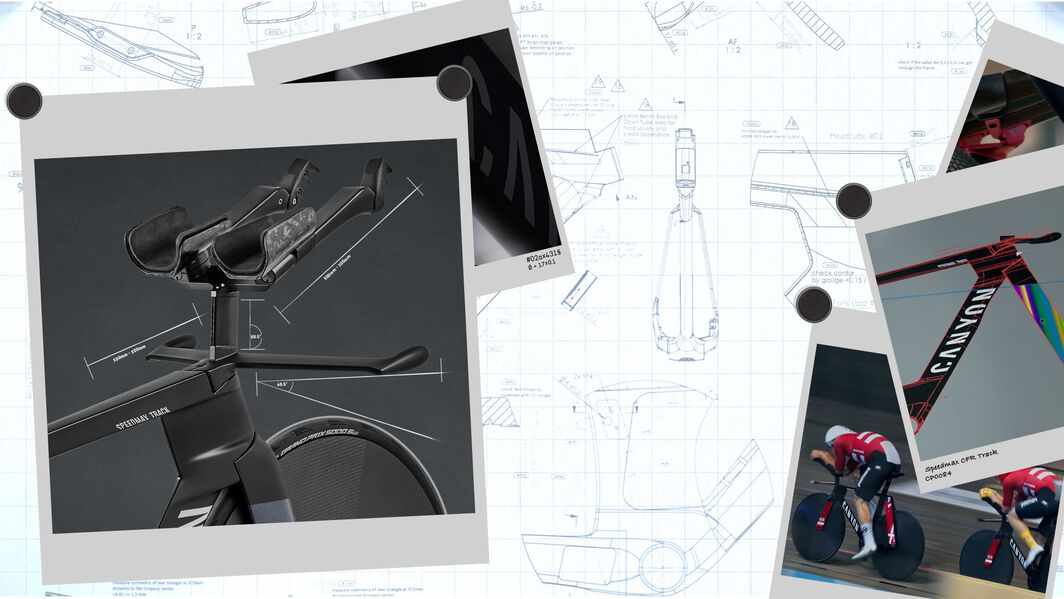
Building stamina and speed on the velodrome
The speed and skills you gain on the track – bike handling, positioning, on-the-fly decision making, to name a few – translate to virtually every other type of bike racing. Like with any cycling discipline, the more you race, the stronger you become.
Because the bikes have no derailleur, it’s up to riders’ legs alone to generate more speed. A typical road cyclist might have a cadence of 80-100 rpm, but the best track sprinters can reach cadences of 180 rpm or more! Endurance races in particular are ideal for building up stamina; longer time trial races teach you to how to ride a fast, but steady, tempo.
Connecting with the track cycling community
Intrigued by track cycling? Attend a race at your nearest velodrome. While non-competitors are typically barred from the infield, you should be able to find someone floating around who can answer your questions about competing yourself.
If you currently belong to a cycling team or frequently compete in local road races (Do you need a new road-racing bike as well?), ask your friends and teammates if they’ve ever competed on the track. Chances are if there’s a velodrome within driving distance, at least one of them has spent time on the track and can help you get started. Most track cyclists love talking about their sport and want to see it grow.
Your first race: Tips for a successful debut
Nerves are completely natural before a first race, but those pre-race jitters will disappear when you’re in the thick of the action on the oval. Here are a few things to always keep in mind:
- Make smart decisions on the track. Don’t take unnecessary risks during your races. You’re responsible not only for your safety, but the safety of your fellow competitors.
- Always keep pedaling!
- Be aware of your position and the riders around you at all times. If you’re moving up or down the track, be sure to look behind you before making a move.
- Have fun! If you’re not enjoying yourself, why are you even doing this?
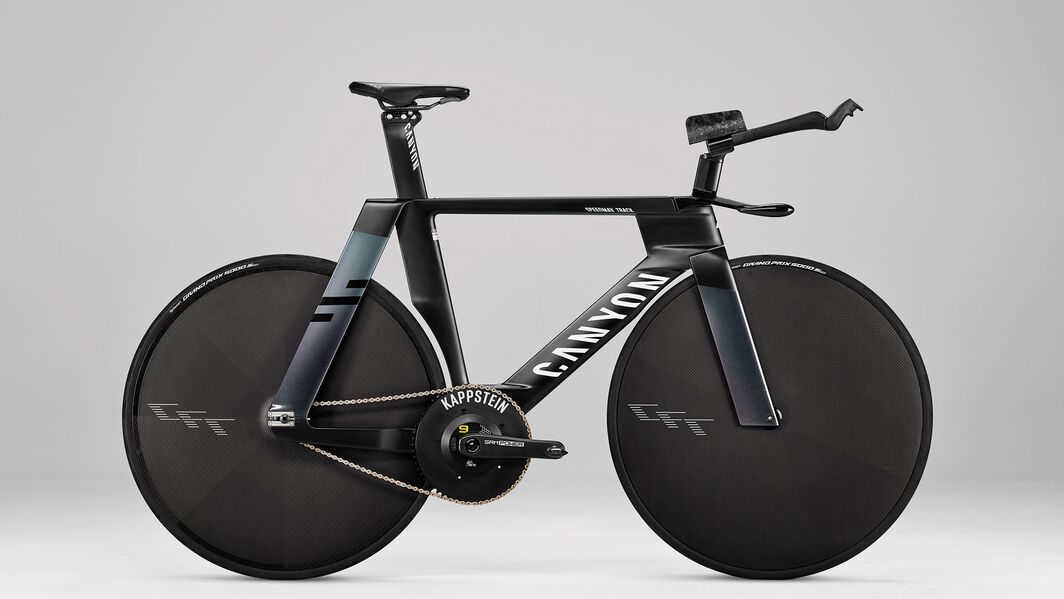
Discover our Road Bikes
Did this article help?
Thank you for your feedback
-
 About the author
About the authorRobert Annis
Robert Annis is an award-winning outdoor-travel journalist. As an experienced writer and sport enthusiast he writes content that is inspiring with focus on road biking. You might have read Robert's articles in Bicycling, National Geographic, Outside, Travel + Leisure, Inside Hook, AARP, Midwest Living, Sierra, Hemispheres, Departures, Lonely Planet, Afar, Los Angeles Times, Chicago Tribune, RV Magazine, and Hidden Compass.
